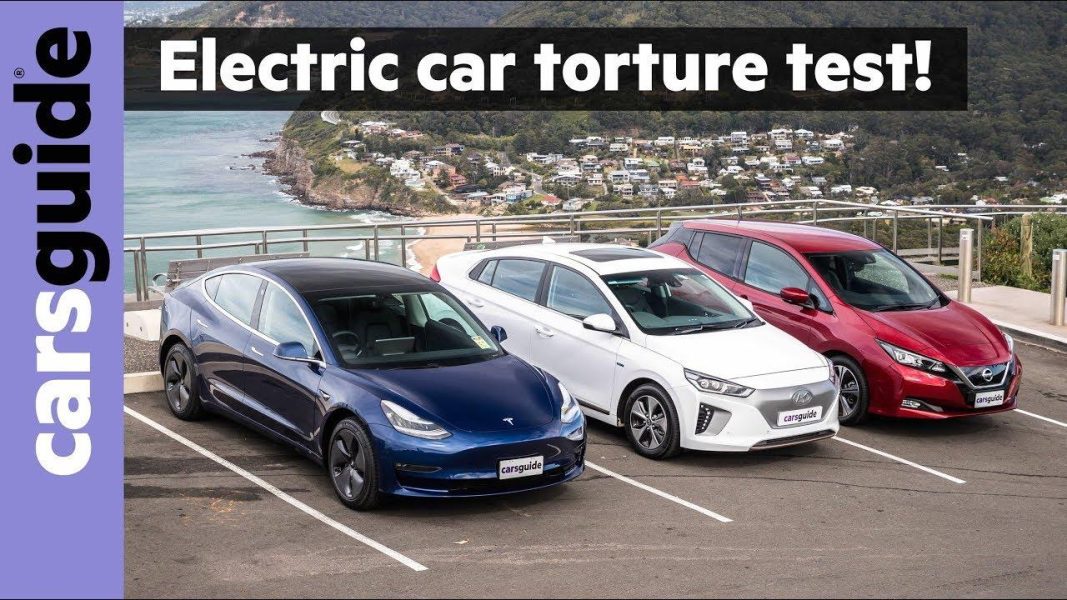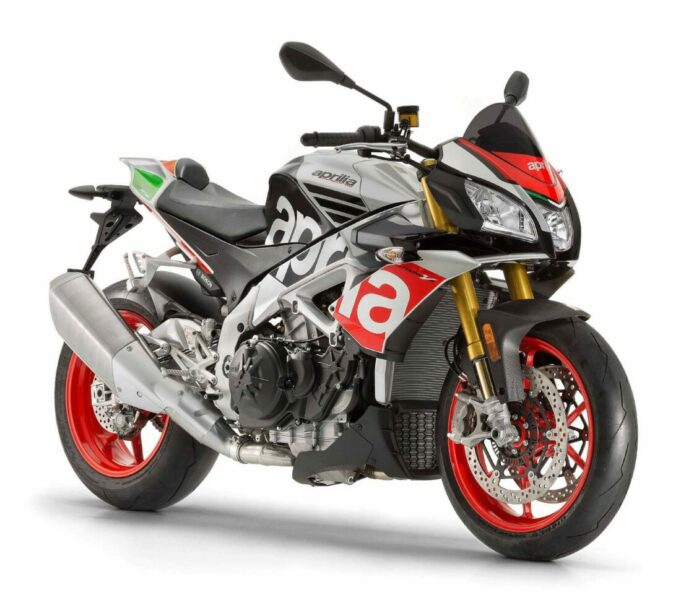
Tesla Model 3 v Nissan Leaf v Hyundai Ioniq Electric: 2019 comparison review
These three cars are similar in many ways. Obviously they are all electric. All cars are five-seater and four-wheeled. But that's where the similarities end, especially when it comes to how they ride.
The Nissan Leaf was our least favorite of the trio, and for good reason.
Throttle response and braking are fine, but that's not surprising in the Leaf.
First, it's ergonomics. The driver's seat is very high and the steering wheel does not adjust for reach, which means that taller passengers can find themselves sitting high, with their arms outstretched too far, because otherwise their legs would be too cramped. Within 10 seconds of getting into the Leaf, you'll know if you can live with it or not, but after a few hours, the answer from our higher testers was a clear no.
There are other elements that let him down. The ride gets clunky at higher speeds, and it doesn't offer the same level of driver engagement as the other two cars here.
Throttle response and braking are okay, but not surprising. The Leaf has Nissan's "e-pedal" system - essentially an aggressive on-or-off regenerative braking system that the brand claims allows you to use just one pedal for most of your driving - but we didn't use it in tests because that we aimed to maintain consistency (the rest of the cars were set to "Standard" for Tesla and Level 2 of four selectable levels (zero - no regeneration, 1 - light regeneration, 2 - balanced regeneration, 3 - aggressive regeneration) for Hyundai.
The Nissan Leaf was our least favorite of the trio.
The Nissan was also the noisiest in the cabin, feeling less refined than its rivals, with more buzzing, humming and moaning, not to mention more wind noise.
The Hyundai Ioniq Electric was very different from the Leaf.
Driving was like any regular i30 or Elantra, which is a huge credit to Hyundai and its Australian team, who tweaked the suspension and steering to suit local roads and conditions. You can really tell because it had the best ride comfort and compliance in the group, plus precise steering - it's more exciting to drive than the Leaf, though not exactly an exciting machine.
Hyundai offers an all-electric or plug-in hybrid version of the Ioniq.
The throttle and brake response of the Ioniq is very predictable and easy to control... just like a "regular" car. We called it "adequate" rather than "exciting" when it came to acceleration from a standstill, and it actually has the slowest 0-100 km/h time of the three cars at 9.9 seconds, while the Leaf claims 7.9 seconds. and the Model 3 has only 5.6 seconds. There is a sport mode for more sharp acceleration.
Hyundai offers an all-electric version or a plug-in hybrid (with a 77kW/147Nm 1.6-litre four-cylinder petrol engine paired with a 44.5kW/170Nm electric motor and an 8.9kWh battery) or a series hybrid (with the same petrol engine). , a smaller 32kW/170Nm electric motor and a tiny 1.5kWh battery) means buyers have options beyond an electric car if it doesn't suit their specific needs.
But honestly, our biggest selling point for the Ioniq is its honest range display - other cars felt like they wobbled more in terms of displayed remaining range, whereas the Ioniq seemed more measured and realistic in terms of displayed remaining range. The biggest negative for this car? Second-row headroom and visibility from the driver's seat - That split tailgate and sloping roofline make it hard to see what's behind you.
The throttle and brake response of the Ioniq is very predictable and easy to control.
If you're looking for a high-tech, futuristic, minimalistic and cutting-edge experience, choose Tesla. I mean if you can afford it.
We know there's a die-hard Tesla fanbase, and the brand certainly offers eye-catching design and desire - in fact, we think it's the most upmarket of the three cars, but not exactly a luxury car to sit or drive.
The cabin is something you will either love or want to leave. This is a simple space that requires some learning, where literally everything is controlled through the screen. Good, except for the hazard lights (which are oddly placed next to the rearview mirror) and the window controls. Suffice it to say that you have to sit in one to see if you like it.
The biggest disappointment with the Model 3 Standard Range Plus is its smooth ride.
While it may not be the most capable version of the Model 3, it still has the 0-100 mph time of a serious hot hatch but with the dynamics of a rear-wheel drive sedan. Riding through twisty sections feels more fun, with a really good level of chassis balance.
Acceleration is noticeably more immediate when you select Standard Driving Mode rather than Chill - the latter of which blunts throttle response to conserve battery life. But use it sparingly if you're aiming for the best range you can get.
The biggest disappointment with the Model 3 Standard Range Plus is its smooth ride. The suspension struggles to cope with bumps and bumps in the road surface, whether at high speeds or in urban environments. It's just not as composed and comfortable as the other two cars. So if riding comfort matters, make sure you get a good ride on bad surfaces.
While it may not be the most productive version of the Model 3, it still has the 0-100 time of a serious hot hatch.
One advantage Tesla has over its competitors is the already installed Supercharger fast charging stations.
These fast chargers allow you to recharge very quickly - up to 270 km in 30 minutes - although you need to pay $0.42 per kWh for this. But the fact that the Model 3 has a non-Tesla type 2 connector and a CCS connection is a plus since Hyundai only has a type 2, while Nissan has a type 2 and a Japanese-spec CHAdeMO fast charging system.
